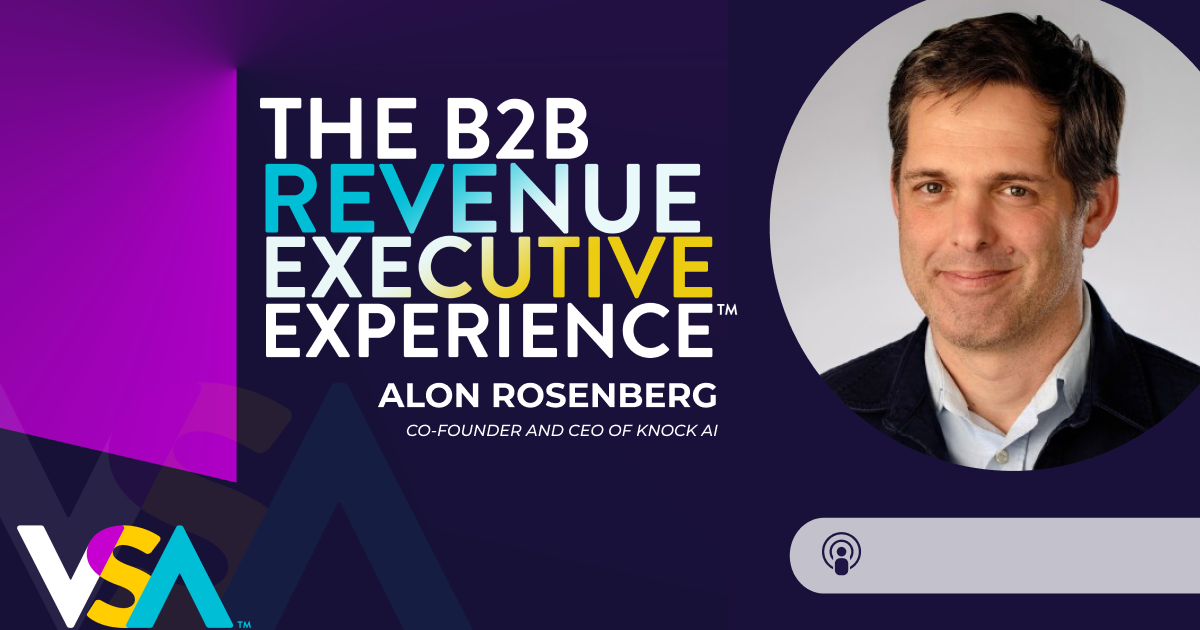How to Drive Greater Employee Engagement

As millennials continue to make up the majority of the workforce, it’s evident that they’re the group that’s least engaged in work.
Baby boomers are the most engaged group at work coming in at 77%.
70% of workers under 25 report being engaged at work.
Alas, millennials engaged in their work only count for 67% of their generation.
How do we get the rest of the 33% engaged in what they do for work?
Employee engagement is exactly what Don Sando, President of Strategic Results Group, specializes in. In the latest episode of the B2B Revenue Executive Experience podcast Don shares his strategy for re-engaging employees.
Follow these three expert tips to repair employee engagement rates.
1. Involve as many people as possible in strategic planning
Don advises involving as many employees as possible in strategic planning. Although this approach may sound cumbersome, it will help to increase ownership and buy-in of employees.
“Employees will acknowledge whether they are engaged or not.”
DON SANDO, President of Strategic Results Group
When individuals are involved with organizational planning, accountability for completing set goals will also increase. Moreover, the benefits of accountability in business are many:
- It strengthens the organizational culture. Embedding accountability into the company culture allows everyone to feel responsible for meeting goals. A lack of accountability can have a snowball effect on an organization.
- It cultivates excellence. By rewarding excellence and correcting underperformance, employees will feel accountable to go above and beyond.
- It secures a feeling of ownership. When each individual is accountable for their own responsibilities within the organization, a sense of ownership develops.
- It establishes trust. By involving employees in strategic planning, you’re demonstrating transparency and a mutual feeling of trust.
- It establishes expectations. Each person should be held accountable for their responsibilities. This fosters collective success within the entire organization.
- It helps achieve a bigger purpose. Involving as many team members as possible will make the overarching goal of the company clear, as well as each member’s part in achieving that goal.
- It defines the reality of an organization. Accountability results in ownership which, in turn, helps to defy groupthink. Each employee is aware of their own responsibilities and the challenges that will need to be addressed.
- It empowers the entire team. Delegating decision-making to all individuals empowers them to become leaders of their goals, as well as the overarching goals of the organization.
It’s clear that encouraging accountability within your organization can result in a myriad of positive outcomes. To successfully promote accountability, it’s crucial to involve as many individuals as possible in the strategic planning process.
2. Each employee has a set list of responsibilities
Don emphasizes the value in each employee having an agreed-upon, prioritized list of 4-6 main responsibilities. The process Don suggests using to establish these lists goes as follows:
- The employee records what they believe their top 4-6 responsibilities are.
- The employee prioritizes these items from most important to least.
- The employee and their direct supervisor look over the list and make any necessary adjustments.
It’s important to take a bottom-up approach to determine employee responsibility lists (unless they’re a new hire). This way, it’s easier for employees to take ownership of their responsibilities and feel accountable to accomplish them, thus increasing employee engagement.
Additionally, establishing each employee’s responsibilities negates the need for micromanagement. This allows individuals to feel even more ownership over their work and makes managing much more enjoyable.
“When things aren’t going as you hoped, deal with it quickly, deal with it early.”
DON SANDO, President of Strategic Results Group
3. Set metrics for each responsibility
Determining employee responsibilities is all for naught if specific metrics aren’t set to measure performance.
While it’s relatively simple to set metrics for sales and payroll employee performance, other areas are a little trickier, like marketing. A few KPIs to consider when measuring marketing performance include:
- The regular growth of closed deals
- The number of leads being fed to sales
- The regular lifetime value of customers
- The cost of customer acquisition
- Marketing team response times
- The traffic-to-lead ratio
- The amount of website traffic
- Social media reach and engagement
- Email CTR performance
- Landing page conversions
The list goes on. Each employee should have metrics determined to measure the success rates of their objectives.
Another area in which it tends to be challenging to measure performance is customer success/satisfaction. Don suggests using surveys to get a pulse on customer satisfaction and identify places for improvement. One question he advises to include on customer surveys is:
Was the work done correctly the first time?
“Every job in an organization can be equally accountable to a set of metrics.”
DON SANDO, President of Strategic Results Group
Increasing employee engagement
In order to authentically increase employee engagement, it’s helpful to follow these three steps. As millennials start to become the new leaders of organizations, employee engagement initiatives are as important as ever to maintain accountability and ownership throughout your company.
This blogpost includes highlights of our podcast interview with Don Sando, President of Strategic Results Group. To hear this episode and many more like it, subscribe to B2B Revenue Executive Experience here.
If you don’t use iTunes, you can find all our episodes here.
Explore More









